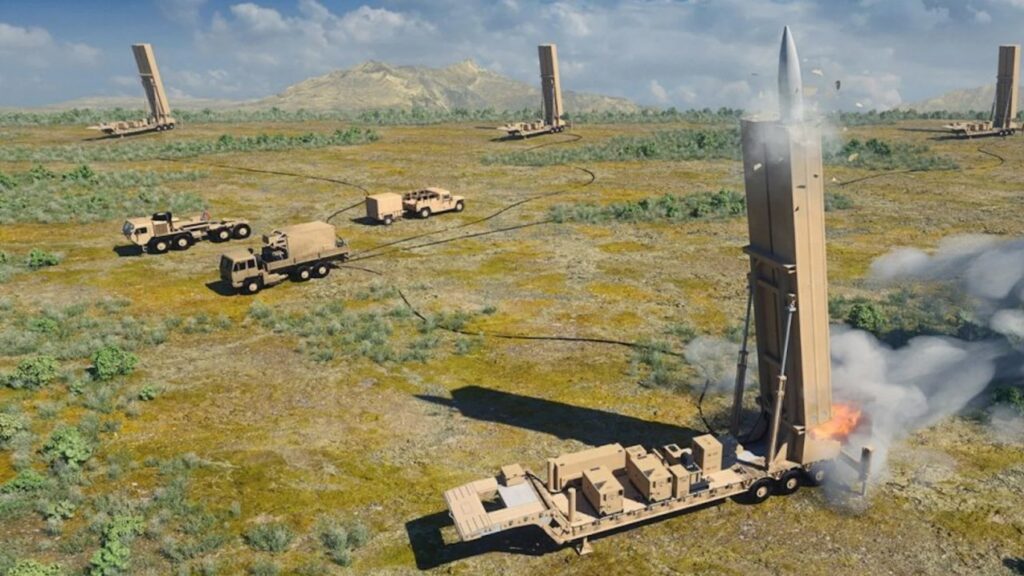Australia has come under heavy criticism from China. It secretly hosted a US Dark Eagle hypersonic missile system during large-scale military exercises. The weapon is known as the Dark Eagle Long Range Hypersonic Weapon. It was brought to Australian soil for the first time as part of Exercise Talisman Sabre 2025.
Dark Eagle Featured in Australian War Games
The exercise, held every two years, is one of the biggest military drills in the Indo-Pacific. This year, it brought together 40,000 personnel from 19 nations, including troops, aircraft, and naval forces. The Dark Eagle was transported by heavy-lift aircraft to Australia’s Northern Territory and then moved by road to undisclosed sites.
The Dark Eagle is designed to travel at speeds faster than Mach 5, which is more than five times the speed of sound or around 6,170 km/h. With a range of about 2,800 kilometres, the missile can strike targets across vast distances in less than half an hour. From Northern Australia, it could reach disputed areas in the South China Sea.
🌍 Pentagon powers Bulgaria — missile deal marks geostrategic shift in European defense map
A single Dark Eagle battery includes four launchers, which together can carry up to eight missiles, along with command and engineering support vehicles. It is one of the US Army’s newest weapons and is seen as a key step in countering advanced missile technology already developed by other nations.
China Responds to Dark Eagle Deployment
The sudden arrival of the Dark Eagle during the war games quickly drew Beijing’s attention. China described the deployment as a “flexing of military muscle.” It accused Australia of acting as a “tool” of Washington’s Indo-Pacific strategy.
Chinese analysts said the missile’s presence in Australia was symbolic. They noted that it could reach contested waters and island chains where China has built military bases. Beijing expressed anger that the deployment took place during high-level diplomatic visits between Canberra and Beijing. It called this a sign of contradiction in Australia’s foreign and defense policies.
First Signs of U.S.-China Tariff War Reset: Boeing 737 Gains Re-Entry into Chinese Market
Despite the criticism, military officials from the United States hailed the deployment as proof that the Dark Eagle is combat-ready. The exercise confirmed the missile’s ability to communicate with command centres even while moving at hypersonic speeds beyond the horizon.
China, however, downplayed the significance of the weapon. According to its officials, Beijing has already fielded advanced hypersonic missiles such as the DF-17, which has been in operation since 2019, and the DF-27, which can reportedly travel much farther than the Dark Eagle. They argued that the US system was still facing delays and cost overruns, putting it behind schedule by nearly three years.
Rising Tensions in the Indo-Pacific
The deployment of the Dark Eagle comes at a time of increasing friction in the Indo-Pacific. Australia, Japan, and the Philippines have all reported close encounters with Chinese warships and aircraft in recent years. These incidents often occur in disputed waters, particularly in the South China Sea and East China Sea.
China claims almost the entire South China Sea, despite international agreements that assign rights to coastal nations under United Nations conventions. This has led to frequent clashes with countries such as the Philippines, which continues to face daily challenges over its rights to the Spratly Islands.
Japan also faces tensions with China over the Senkaku Islands in the East China Sea, where Chinese ships and aircraft have repeatedly entered nearby waters and airspace. To strengthen their defence, Japan has been preparing to conduct joint drills with the United States, testing new missile systems and military readiness.
Trump Unveils New F-55 Fighter Jet in Qatar, Twin-Engine Powerhouse Raises Global Eyebrows
China currently operates the world’s largest navy, a modern air force, and a growing stockpile of long-range missiles. Many of these weapons are designed to counter US aircraft carriers and allied forces across the so-called First Island Chain, a stretch of islands from Papua New Guinea to Japan. Beijing considers this area its core strategic zone and reacts strongly whenever foreign powers conduct military drills nearby.
Earlier this year, the Philippines allowed US anti-ship missile batteries to train on its territory, prompting Beijing’s angry response. Japan’s plans to purchase new missile systems have also drawn similar protests. Australia’s hosting of the Dark Eagle has now added another layer to these tensions, with China openly questioning Canberra’s role in US military strategy.
